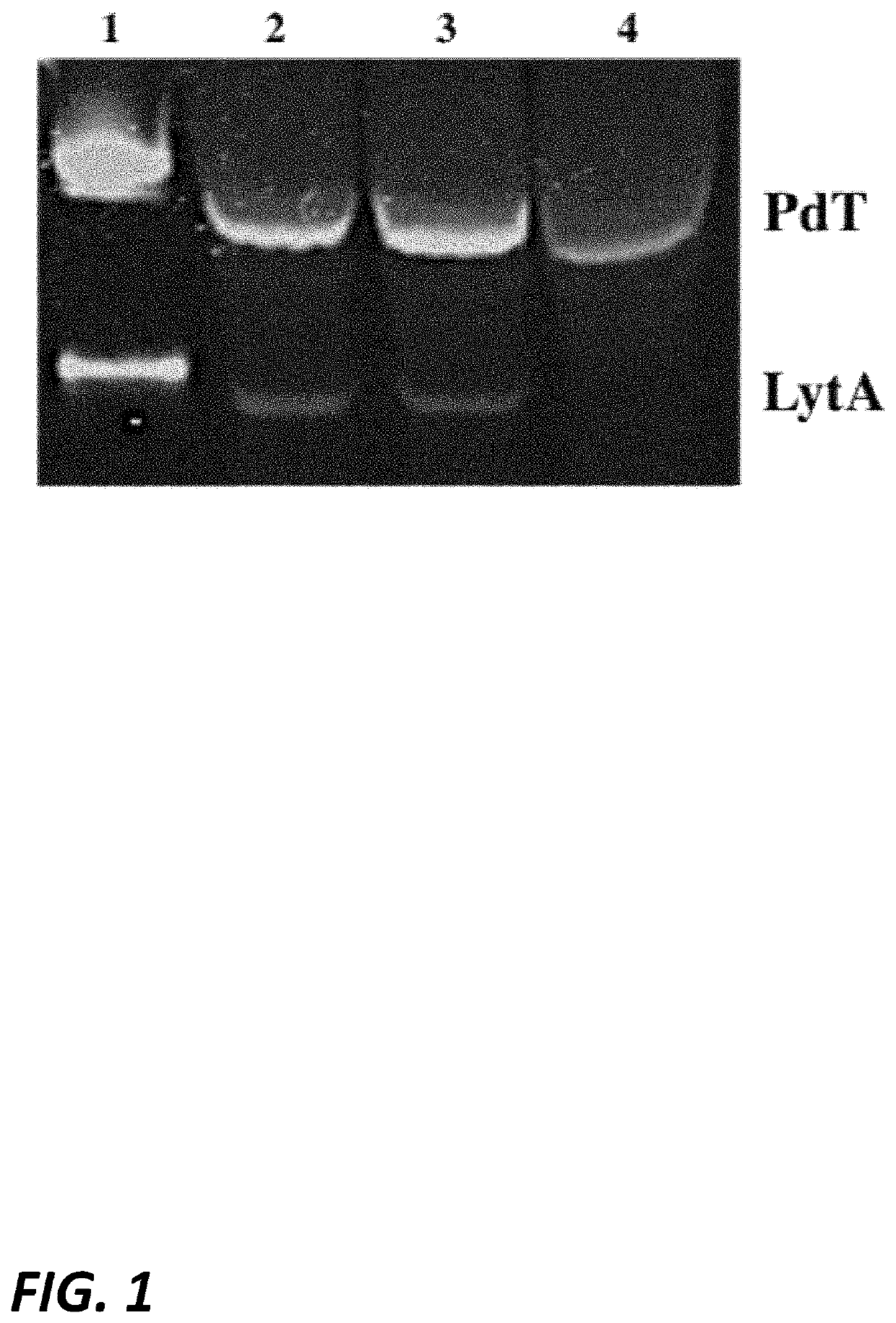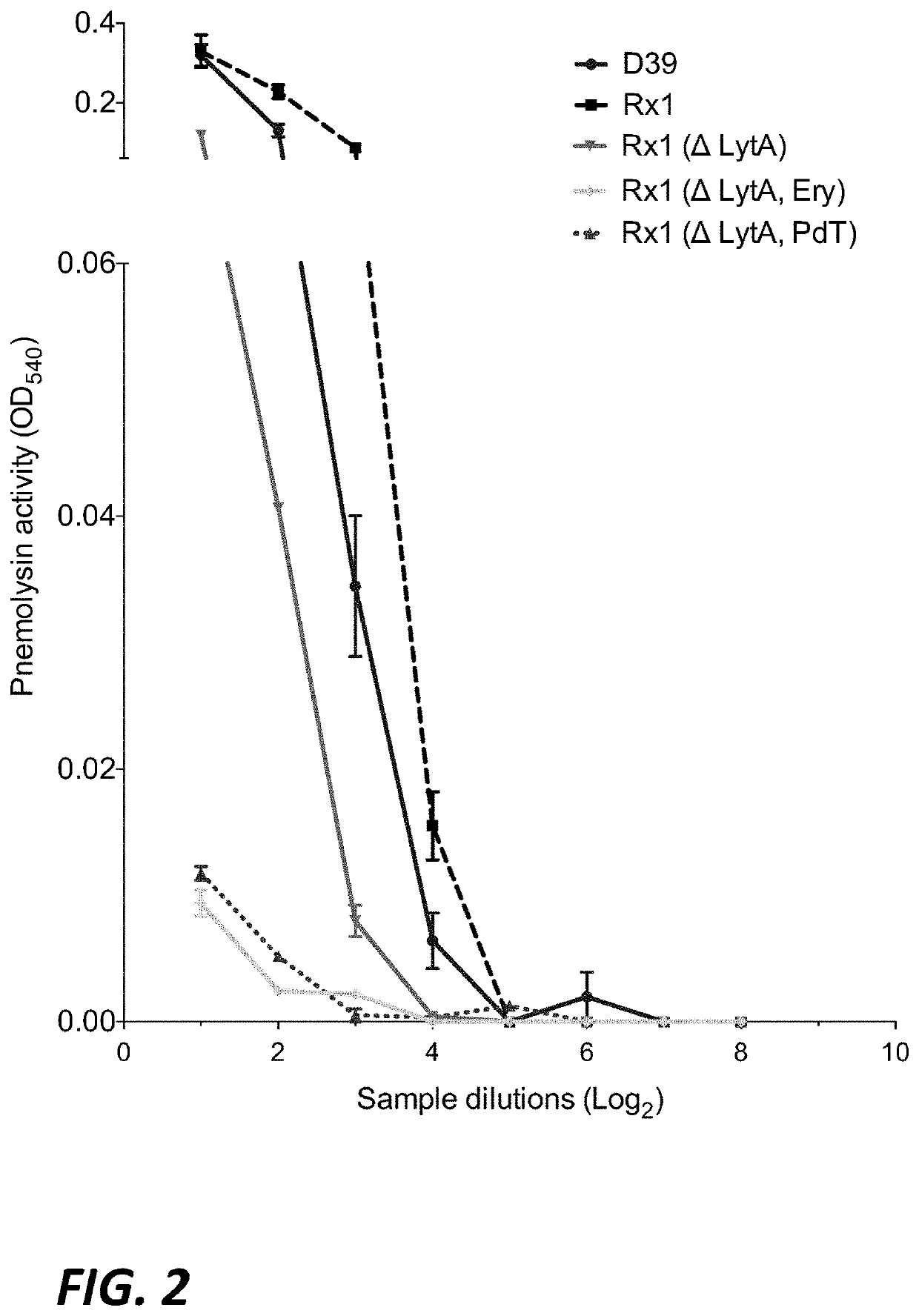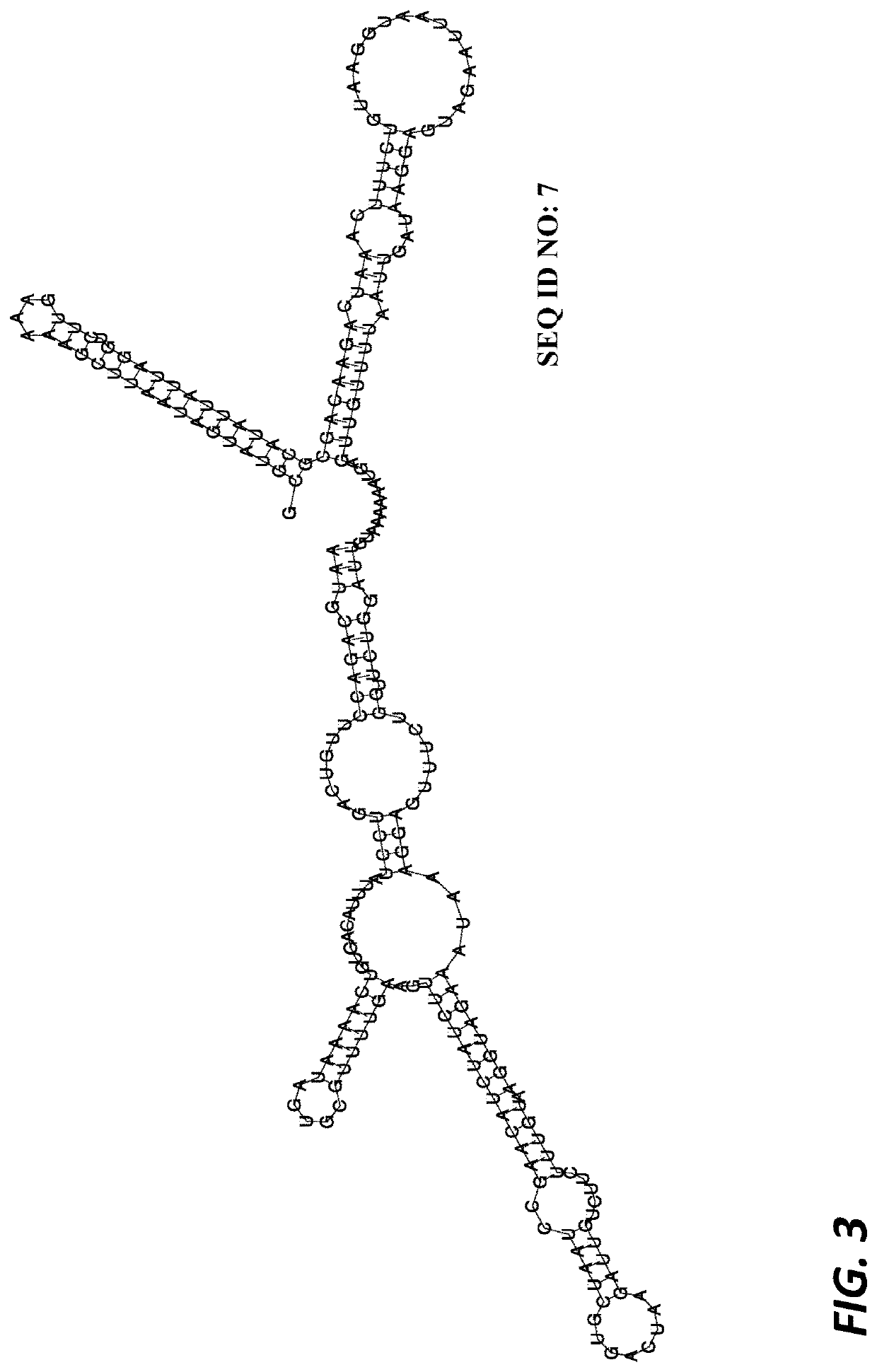Streptococcal vaccine
a streptococcal and vaccine technology, applied in the field of vaccines, can solve the problems of serotype replacement often reducing the net effect of vaccination, more serious types of infection, endocarditis and urinary tract infections, etc., and achieve the effect of reducing or alleviating at least one deficiency of existing streptococcal vaccines
- Summary
- Abstract
- Description
- Claims
- Application Information
AI Technical Summary
Benefits of technology
Problems solved by technology
Method used
Image
Examples
example 1
n of a Pneumococcal Strain Suitable for Testing as a Universal Vaccine
[0265]Streptococcus pneumoniae strain Rx1 is a derivative of serotype 2 (D39), which lacks the outer capsule of the bacterium. This strain was genetically modified to remove the autolysin gene (lytA) as shown in the flow chart of FIG. 22. The resultant Rx1 (ΔLytA) strain was further modified by replacing the pneumolysin gene (ply) with a toxoid version of Ply, designated as PdT, as shown in the flow chart of FIG. 22.
[0266]PCR and Western blot were performed after each transformation step to further confirm successful transformations, and sequencing confirmed the successful generation of a lytA deficient, pneumolysin mutant (PdT) Rx1 strain, designated S. pneumoniae Rx1 (ΔLytA, PdT) (FIG. 1).
[0267]A haemolytic assay was performed on each derivative to confirm the lack of haemolytic activity in the derivative strain carrying the PdT mutant form of pneumolysin (FIG. 2).
[0268]Western blot, PCR and sequencing thus conf...
example two
tructure Analysis of mRNA Transcript from the ΔlytA Gene
[0269]Analyses were performed to predict the secondary structure of the ΔlytA gene mRNA transcript.
[0270]The DNA sequence of the lytA gene of strain Rx1, prior to deletion, including flanking regions, is shown in SEQ ID NO: 1 (FIG. 23). The entire coding region of the lytA gene from the ATG (start codon) through to the TAA (stop codon) was deleted, in-frame, by splice-overlap extension PCR. The resultant ΔlytA gene sequence is shown in SEQ ID NO: 2 (FIG. 24A). The mRNA transcript coded by the ΔlytA gene sequence is shown in SEQ ID NO: 3 (FIG. 24B).
[0271]The secondary structure of the mRNA transcript was predicted using RNAfold (RNAfold WebServer ([http: / / rna.tbi.univie.ac.at / cgi-bin / RNAfold.cgi]) and is shown in FIG. 3. The predicted secondary structure of the mRNA transcript shown in FIG. 3 is anticipated to have a minimum free energy of −52.80 kcal / mol. The predicted double-stranded termination stem-loop sequence shown underl...
example fourteen
Pneumococcal Derivative with a Genetic Alteration in a Gene Encoding a Virulence Determinant
[0311]Streptococcus pneumoniae strain Rx1 (ΔLytA, PdT) was further genetically modified by removing the gene encoding the pneumococcal surface antigen A (PsaA), as shown in the flow chart of FIG. 25.
[0312]PCR, sequencing and Western Blot were performed after each transformation step to confirm successful transformations had occurred and to confirm the generation of Rx1 (ΔLytA, PdT, ΔPsaA) strain (FIG. 19A and FIG. 19B). FIG. 19C confirms the successful deletion of the psaA gene from Rx1 (ΔLytA, PdT) to generate Rx1 (ΔLytA, PdT, ΔPsaA) and demonstrates the growth defect of the Rx1 (ΔLytA, PdT, ΔPsaA) strain in media not supplemented with Mn2+.
[0313]Western blot, PCR and sequencing thus confirmed the successful generation of Streptococcus pneumoniae strain Rx1 (ΔLytA, PdT, ΔPsaA).
PUM
| Property | Measurement | Unit |
|---|---|---|
| mass | aaaaa | aaaaa |
| energy | aaaaa | aaaaa |
| time period | aaaaa | aaaaa |
Abstract
Description
Claims
Application Information
 Login to View More
Login to View More - R&D
- Intellectual Property
- Life Sciences
- Materials
- Tech Scout
- Unparalleled Data Quality
- Higher Quality Content
- 60% Fewer Hallucinations
Browse by: Latest US Patents, China's latest patents, Technical Efficacy Thesaurus, Application Domain, Technology Topic, Popular Technical Reports.
© 2025 PatSnap. All rights reserved.Legal|Privacy policy|Modern Slavery Act Transparency Statement|Sitemap|About US| Contact US: help@patsnap.com



